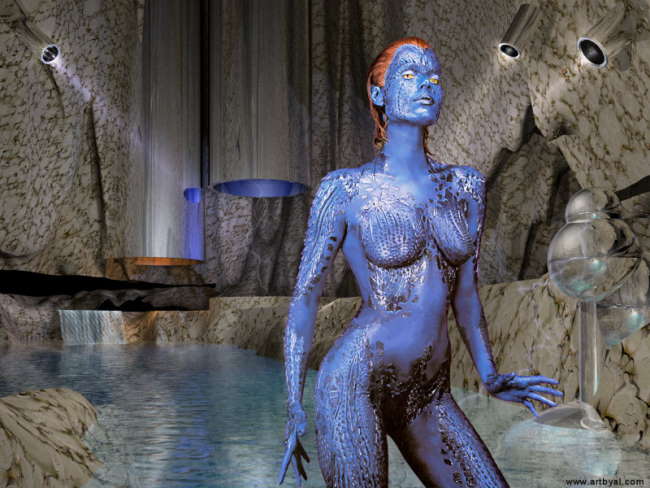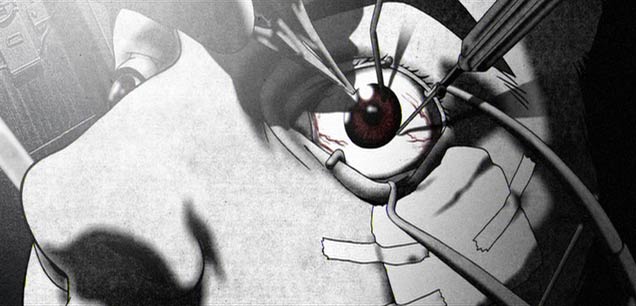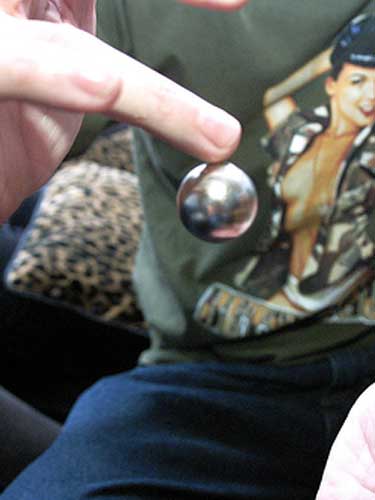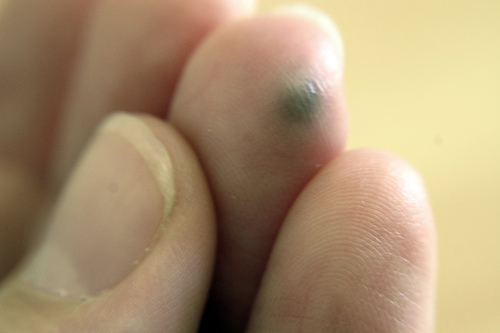June 8, 2006
Transhumanists: Ushering In the Posthuman Era or…?
The Institute for Ethics and Emerging Technologies (IEET), recently held a conference at Stanford University Law School on Human Enhancement Technologies and Human Rights (HETHR). The description for the conference described the purpose as follows:
Defenders of enhancement argue that the use of biotechnologies is a fundamental human right, inseparable from the defense of bodily autonomy, reproductive freedom, free expression and cognitive liberty. While acknowledging real risks from genetic, prosthetic, and cognitive enhancement, defenders of enhancement believe that bans on the consensual use of new technologies would be an even greater threat to human rights.
Health care, disability and reproductive rights activists have argued that access to technology empowers full and equal participation in society. On the same grounds a generalized right to “technological empowerment” might connect defenders of enhancement technologies with disability activists, reproductive rights activists with would-be parents seeking fertility treatments, the transgendered with aesthetic body modifiers, drug policy reformers and anti-aging researchers with advocates for dignity in dying.
Yet, what, if any, limits should be considered to human enhancement? On what grounds can citizens be prevented from modifying their own genes or brains? How far should reproductive rights be extended? Might enhancement reduce the diversity of humanity in the name of optimal health? Or, conversely, might enhancements inspire such an unprecedented diversity of human beings that they strain the limits of liberal tolerance and social solidarity? Can we exercise full freedom of thought if we can’t exercise control over our own brains using safe, available technologies? Can we ensure that enhancement technologies are safe and equitably distributed? When are regulatory efforts simply covert, illiberal value judgments?
Between the ideological extremes of absolute prohibition and total laissez-faire that dominate popular discussions of human enhancement there are many competing agendas, hopes and fears. How can the language of human rights guide us in framing the critical issues? How will enhancement technologies transform the demands we make of human rights?
The IEET is associated with the World Transhumanist Association, which is headed up by Citizen Cyborg author and Cyborg Democracy Blog contributor, James Hughes.
The Reviews: George Dvorsky, a Board member of IEET had a quick post listing a number of the reviews. Depending on which review you read for the HETHR conference, you could take away that this was either one of the most enlightening debates of the decade or that was a conference filled with left-wing crackpots espousing half-baked theories one would expect after a bad LSD trip. Not surprisingly, George thought the event was a smashing success:
The central focus of the conference was to construct a case for human enhancement based upon the lofty principles of human rights, liberalism and bodily autonomy. The event was in no small way a direct challenge to the burgeoning anti-enhancement camp that has arisen in recent years to combat what is perceived to be a threat to human dignity and humanity itself. Organizers of HETHR hoped that the conference would demonstrate that a viable and compelling case could be made in favour of enhancement. Based on what I heard at the event, I would say it was mission accomplished.
Hmmm…Mission Accomplished seems to have taken on a different meaning these past few years - yet in this case, perhaps the words were well chosen. Others clearly disagree. Wesley Smith from the Weekly Standard writes:
I just got home from a transhumanism conference (”Human Enhancement Technologies and Human Rights”) being held at Stanford through tomorrow (Sunday). Among the items I learned today are: Feminist bioethics supports genetic engineering so that men can be altered to have babies and women can be freed from the tyranny of menstruation; animals should be enhanced to permit them to become equivalent to humans, including the ability to use the Internet–before, that is, all animal life is transformed into non biological states of existence, which apparently the living planet Gaia requires in order to survive; funding anti-aging research is more important than funding treatment for fighting disease in Africa; we probably should permit people who want to be amputees to achieve their desires; and, freedom requires a maximum morphological license to enhance our biological units.
If this is at all representative, I would have to agree that the animal part is especially odd. Who gives us the right to transform elephants or Dolphins, for that matter? Modifying our brains to be able to communicate with Dolphins - Cool! Modifying dolphins to communicate with us, and only then asking their permission if this was a good idea? Not cool. Then again, I’m guessing this is a slightly biased assessment. William Saletan from Slate.com submitted a slightly kinder assessment, although not by much:
Remember those kids who played Dungeons & Dragons and ran the science-fiction club in your high school? They’ve become transhumanists….De Grey, the guy with the beard, called for higher taxes and research funding to “end the slaughter” of human aging. He argued, incoherently, that our failure to do everything possible to stop aging this instant was tantamount to mass murder. He also floated the creepy idea that overpopulation might not become a problem because once we’re immortal, we might realize children are no fun. Even so, he asked the kind of penetrating question only a big-thinking oddball would come up with. Are we stuck in a “trance” of fatalism about aging? If we realize it can be slowed or stopped, “will aging become repugnant,” like any other disease?
My favorite panel began with the president of the Toronto Transhumanist Association. He runs a Web site called betterhumans. He and I share a moral objection to killing animals. But letting animals live isn’t enough for him. Inspired by an experiment in which chimpanzees were given a kitchen and flush toilets, he wants to use cyber- and biotechnology to elevate all animals to human status. “Anything less than human-level capacity would be unacceptable,” he declared—including the ability to operate tools remotely through the Internet.
He was followed by a transsexual transbemanist. Transhumanism, apparently, is too parochial. It’s too focused on humans, too narrow for the “mindfiles,” “mindware,” and “virtuality” into which we’re going to upload ourselves. According to the speaker—picture Willie Nelson with a shave—our identities can be broken down into units called bemes, in the same way that culture can be broken down into memes. These, in turn, can be “bemed up” and preserved in media outside our bodies. As examples, she suggested your smile, how lasagna tastes to you, and your memory of your first bike ride. The idea of extracting such plainly body-dependent things is ridiculous. But her basic point is right: Bemes, not genes, are what capture and preserve our essence.
Considering I used to play D&D non-stop (I was too busy with D&D to help organize the SF&F club at school), I felt sort of an affinity here. Again though, I got the feeling from reading the reviews that perhaps the most extreme aspects of the conference were being relayed. Dale Carrico from IEET responded to this already, so I won’t too much more into it.

Brian Alexander of MSNBC linked transhumanism with the new X-Men movie - I guess this means the Transhumanism movement will suffer many key deaths along the way, but will ultimately be responsible for a problematic narrative with lots of explosions (hmmm…maybe this is accurate!). Actually, Brian’s article seemed a bit more balanced:
Transhumanism is being taken seriously by an increasing number of scholars. The fact that Stanford’s respected legal bioethics program hosted the 150 or so attendees from Europe, Asia, New Zealand and North America to discuss issues raised by human enhancement is testimony to how far transhumanism has come in from the fringe…
Still, the idea of modifying people does have a great many ethical implications, as keynote speaker Walter Truett Anderson pointed out. Anderson, president of the World Academy of Art and Science, a consultant, and an author of books about the human future, asked his audience to consider the health of the planet when they thought about what rights people should have to change our biology. There is more at stake, he said, than just ourselves. We are part of something bigger.
“We will have to think about it in a global context,” he told me. “A new population problem looms, which has to do, not with birth rates, but death rates and the question of whether we can begin to increase life spans for large numbers of people,” a prospect that could tax global resources.
The best account of the conference for those like myself who did not attend comes from Nydra’s Existence is Wonderful blog. Nydra’s Introduction and 5 Part Series goes in-depth at a number of sessions, and gives the perspective that perhaps some in-depth thought actually took place there. She does a terrific job at laying out the POV of the speakers, and then gives her thoughts on it. While I may not agree with her on everything, I certainly very much appreciate the detailed effort she put into this, and will probably spend lots more time perusing them.

Left Wing Loonies or Something More? The Slate review above briefly mentions a struggle for the heart and soul of the Transhumanist movement in saying, “A while back, I’m told, there was a left-right battle for the soul of transhumanism, and the left won..” It appears that one casualty of this struggle is Simon Young. He has the belief that the World Transhumanist Association and its leader, James Hughes, are members of the “Loony Left,” who have essentially gone off the deep end of transhumanist thought. He details his thoughts in Wesley Smith’s review above. His biography states the following:
“Son of the pioneering English cybernetician and author, J. F. Young ( 1929-94), whose seminal books included Cybernetics (1969), Robotics (1973), and Cybernetic Engineering (1973) , Simon Young is an accomplished pianist and composer who has performed across Europe . This unusual combination of influences, musical romanticism and scientific rationality, informs his Transhumanist philosophy – the passionate belief in striving to transcend human limitations through reason, science and technology.”
I have a masters in Cybernetics and General Systems Theory, but I must confess that I’ve never heard of his father’s books (more to add to the stack I suppose). In any event, Simon has created a competing organization called the World Transhumanist Society. On the whole, I sort of like his evolution over revolution approach, but the WTS at this point seems like nothing more than a web page. Has anyone joined this, or is Simon a lost voice in the wilderness?
So What Do I Think of All This? As for my own thoughts, I must admit, I’m still thinking about this whole movement, so if my thoughts seem ill-formed, please feel free to set me straight. The part that really bothers me about this whole debate deals with the seemingly single-minded pursuit of transhumanism without regard to the massive potential for unintended consequences. Our cyberpunked future may indeed be wonderful, but it has just as much potential to turn into a modern-day dystopia, not unlike many of the movies we see here. If my schooling in anthropology and cybernetics has taught me anything, it’s that most people think in terms of cause and effect changes, while actual change is very counter-intuitive and interlinked - making explicit wholesale changes to society really should involve an understanding of the complexities involved. Societies are held together by stable patterns of interaction and some semblance of a shared way of life. Simply because we develop the power to change every aspect of ourselves or our society doesn’t necessarily imply that doing so will result in the betterment of mankind. By no means am I advocating we should rise up in anger at the transhumanism movement, but we should demand enlightened thought, and a comprehensive societal risk assessment for innovations that could lead to massive societal change.
In terms of priorities, it seems rather clear that the HIGH priority for posthuman research (after the development of high quality vampire teeth, of course) should be in helping those with disabilities and lost body parts. If there is anything good about the Iraq conflict, its the massive dollars going into research in prosthetics.
Thoughts?









